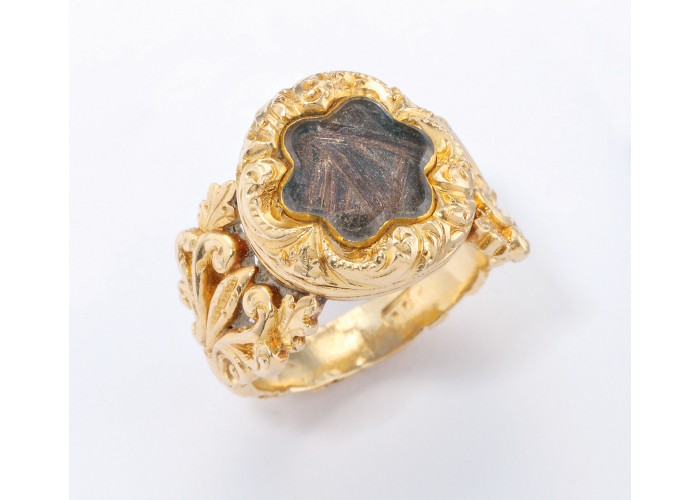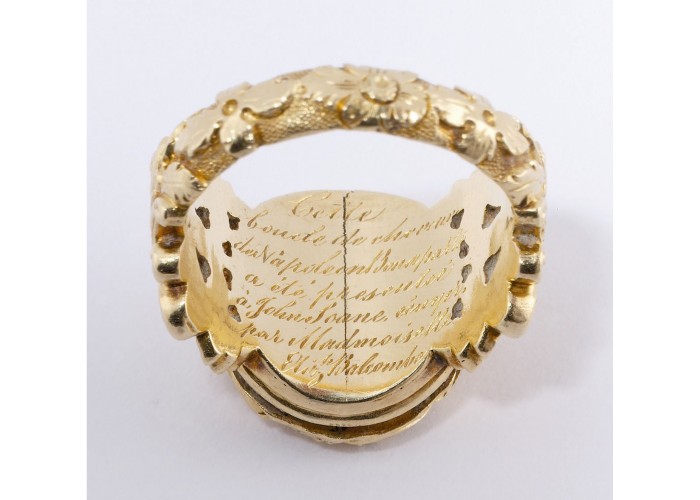Mourning Ring with Napoleon’s hair from St. Helena
This golden ring contains hair from the head of Napoleon Bonaparte, collected after he was exiled to the island of St. Helena in 1815. Napoleon had many admirers in Britain, even after his defeat at the Battle of Waterloo. It was common in the 19th century to remember loved ones by creating keepsakes made with their hair or body parts, known as “memento mori”.
After his defeat at the Battle of Waterloo Napoleon was sent into exile to St Helena, a small windswept island in the South Atlantic. He remained a prisoner until his death six years later in 1821. The British Royal Navy controlled the waters in the area to ensure that he did not escape. For Bonaparte, this final period was devoted to writing his memoirs.
While this incarceration was no doubt an ignominious end to a meteoric career, Napoleon was still acclaimed across Europe. His English admirers included the architect and collector, Sir John Soane.
Bonaparte was accompanied to St Helena by a small group of his household staff and followers: General Henri Bertrand, General Charles Montholon, and his secretary, Emanual de Las Cases. He was also entertained by William Balcombe, a minor official of the East India Company, and his children.
After Napoleon’s death, in addition to writing memoirs of their time with him, the inhabitants of St. Helena made substantial profits selling objects he had supposedly owned. But, as in the case of other heroes, particular value was given to locks of his hair. Elizabeth ‘Betsy’ Balcolmbe, aged 16, who had been Napoleon’s favourite, was the recipient of at least one of them. In 1822, she was moved by Soane’s genuine fascination with the Emperor and presented it (or possibly sold it) to him in London.
Soane had a special ring made for it with the inscription: ‘This lock of hair of Napoleon Buonaparte was presented to John Soane Esquire by Miss Elizabeth Balcombe’. It became a treasured family heirloom.
 Image provided courtesy of the Trustees of Sir John Soane’s Museum. This ring was acquired by the Sir John Soane’s Museum with the assistance of a major grant from the Art Fund.
Image provided courtesy of the Trustees of Sir John Soane’s Museum. This ring was acquired by the Sir John Soane’s Museum with the assistance of a major grant from the Art Fund.
-
Curatorial info
- Originating Museum: Sir John Soane's Museum
- Production Date: c. 1822
- Material: Gold, glass, hair
-
Use this image
You can download and use the high resolution image for use in a non-profit environment such as a school or college, but please take note of the license type and rights holder information below
- Rights Holder: Copyright Sir John Soane's Museum.
- License Type: All Rights Reserved
Find it here
This object is in the collection of Sir John Soane’s Museum








